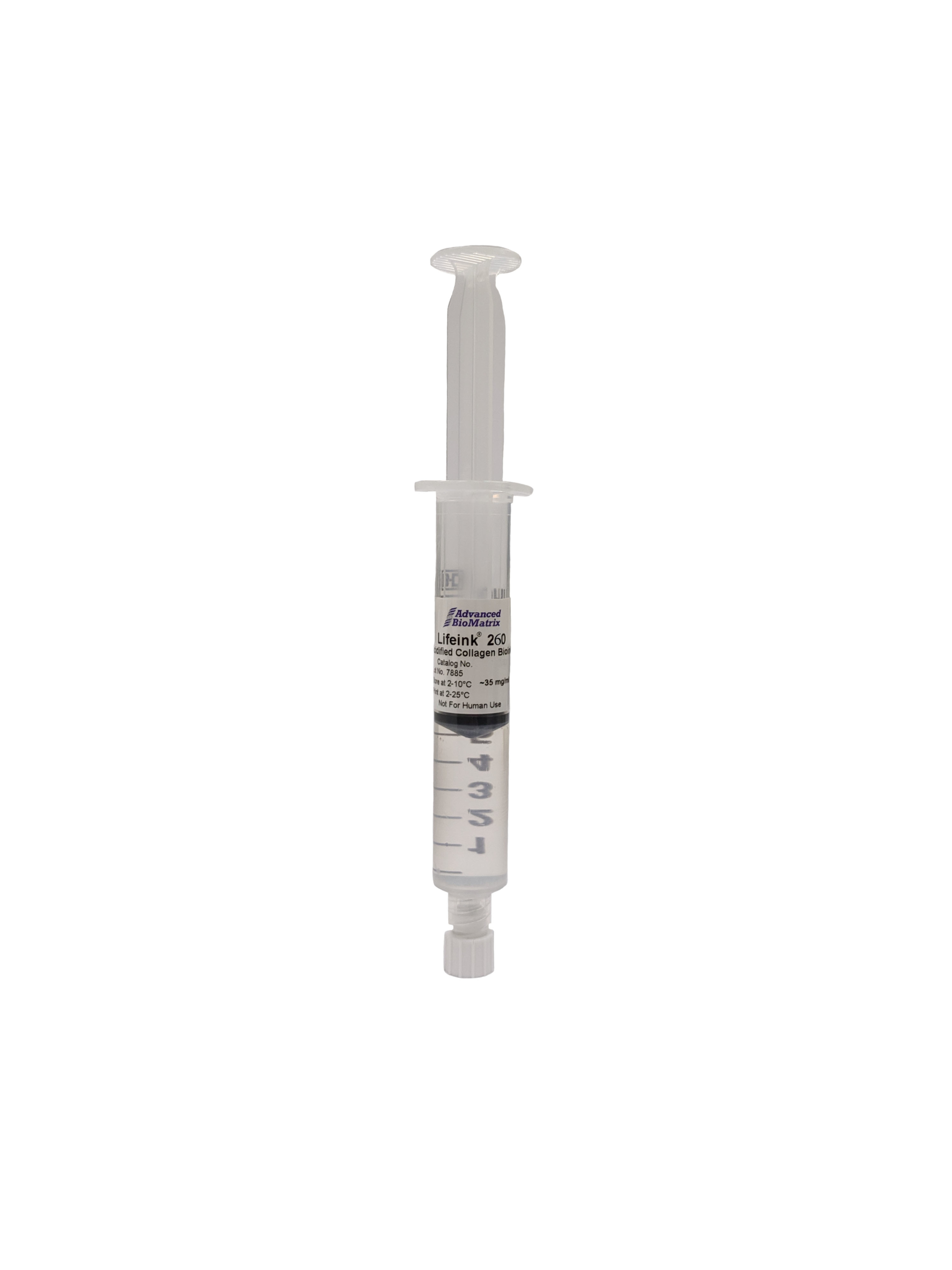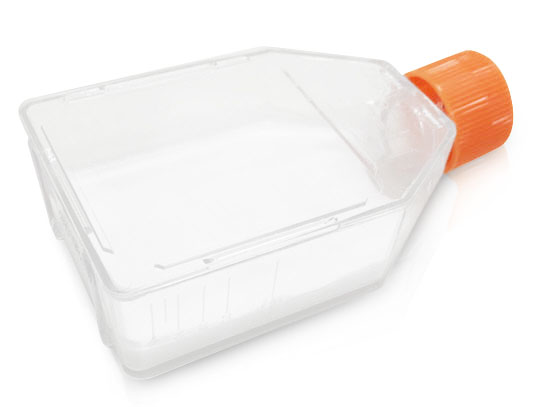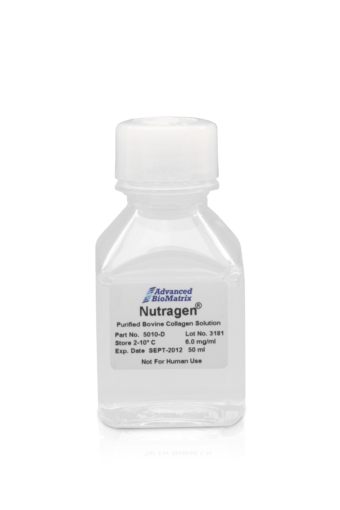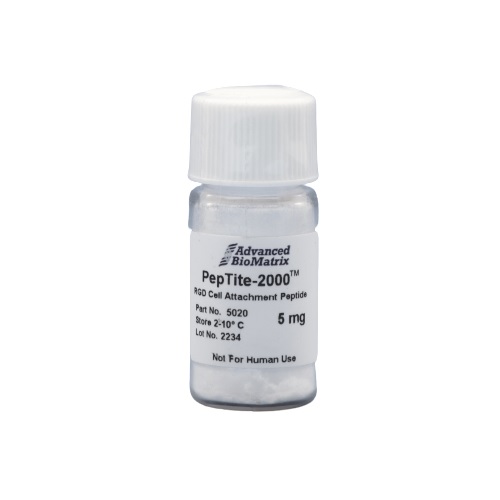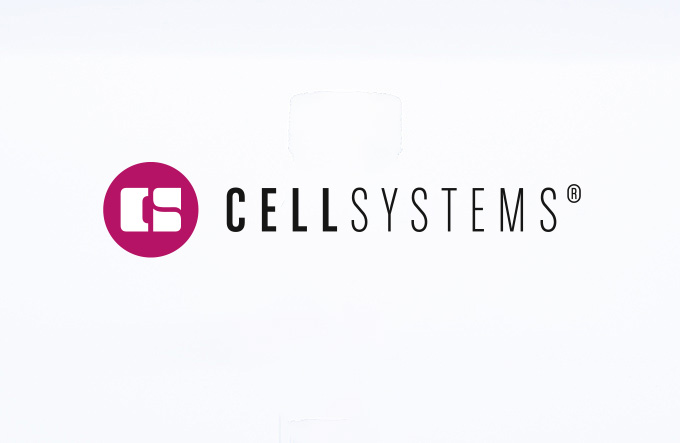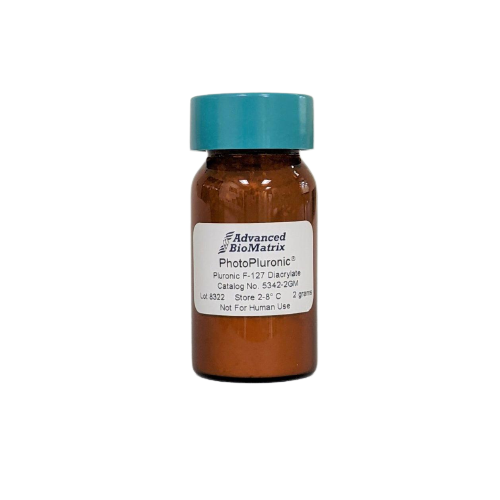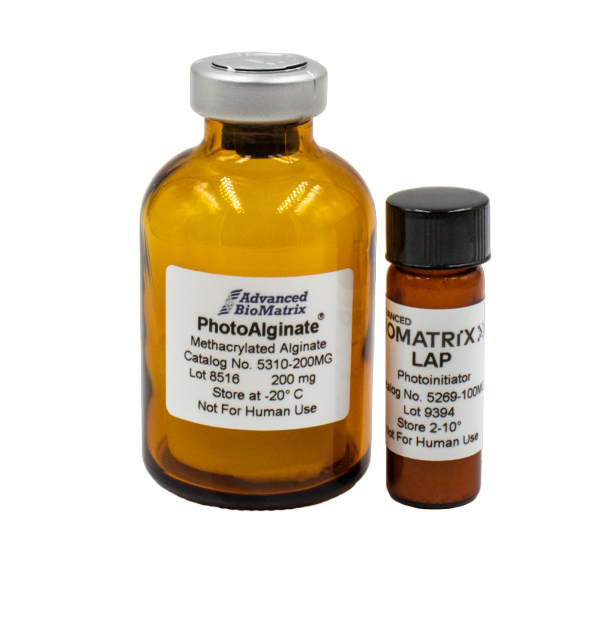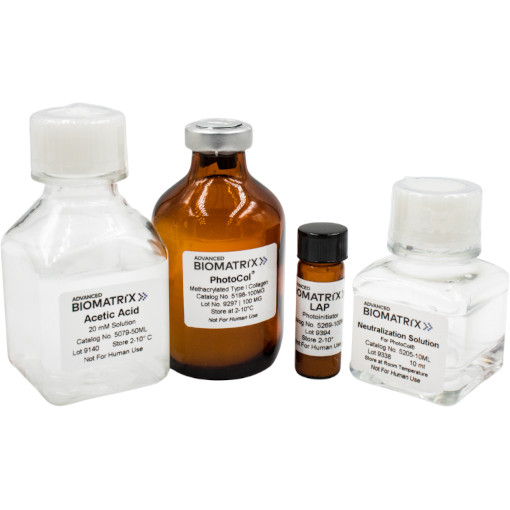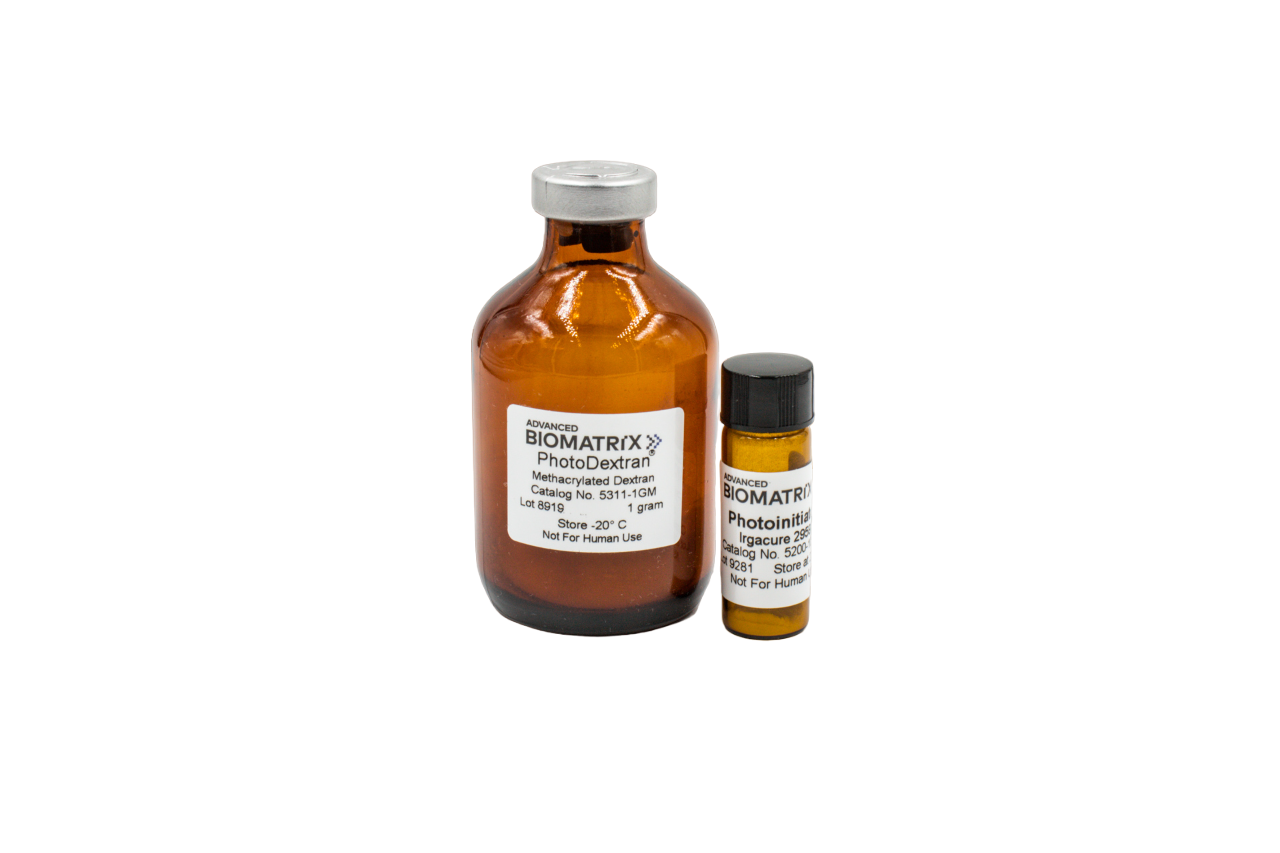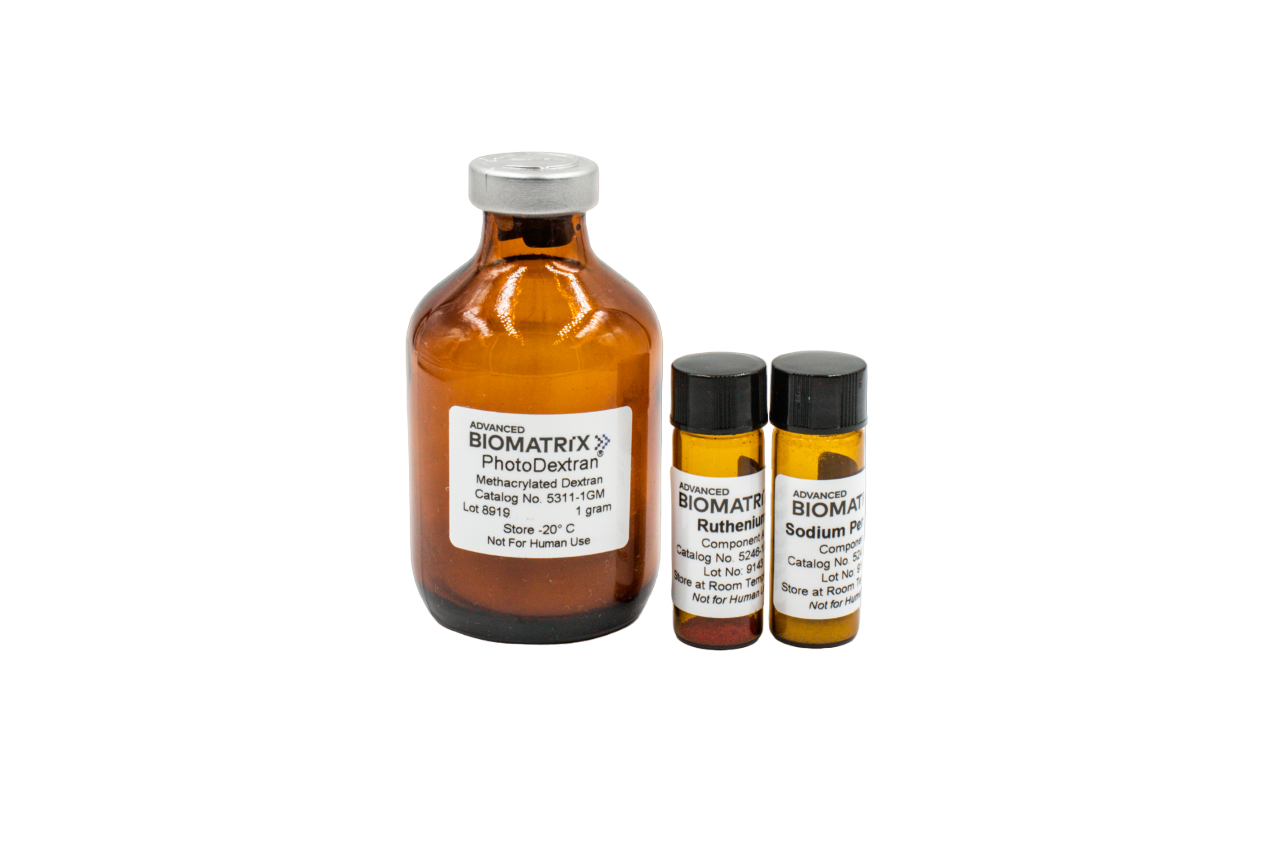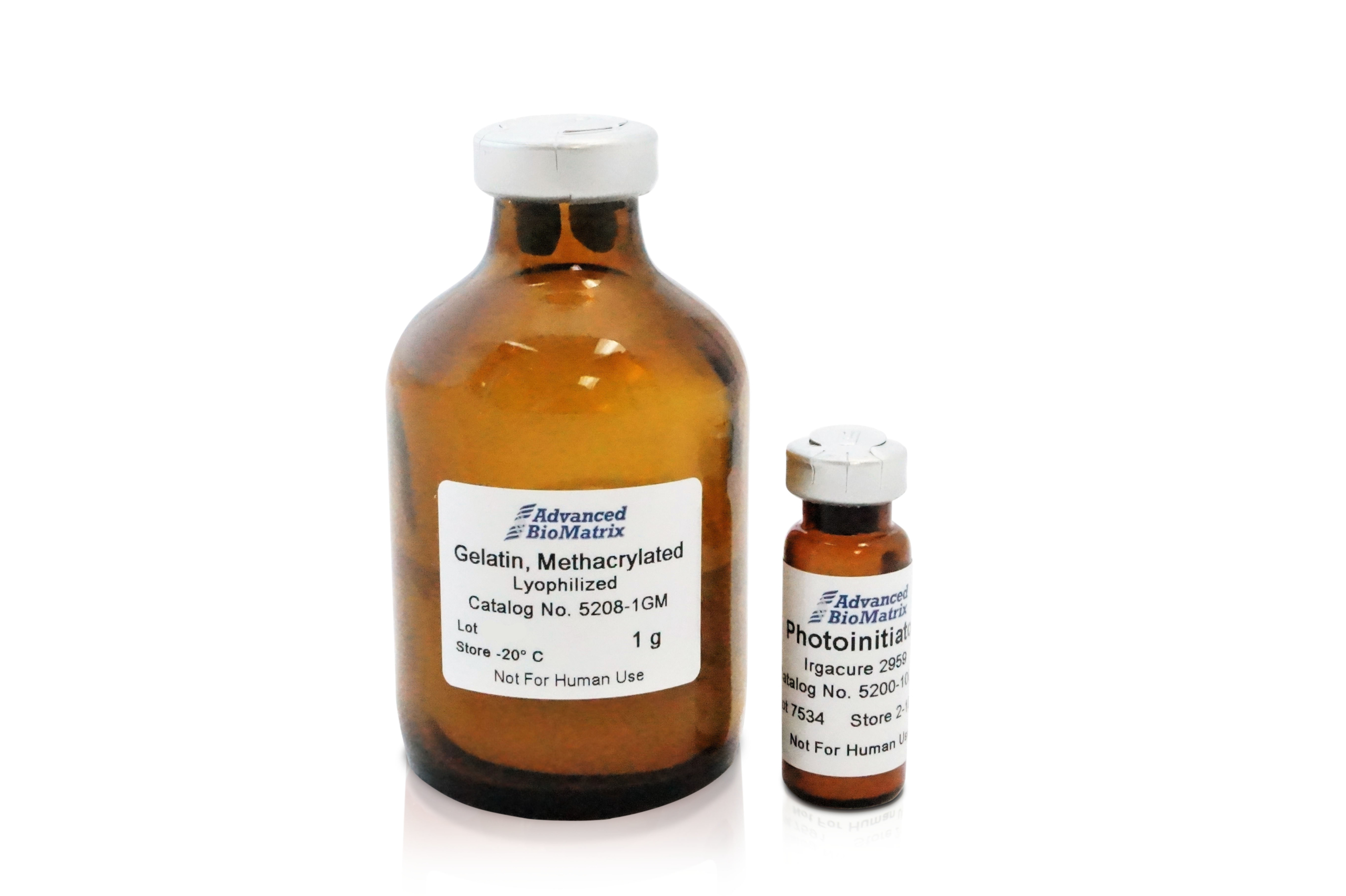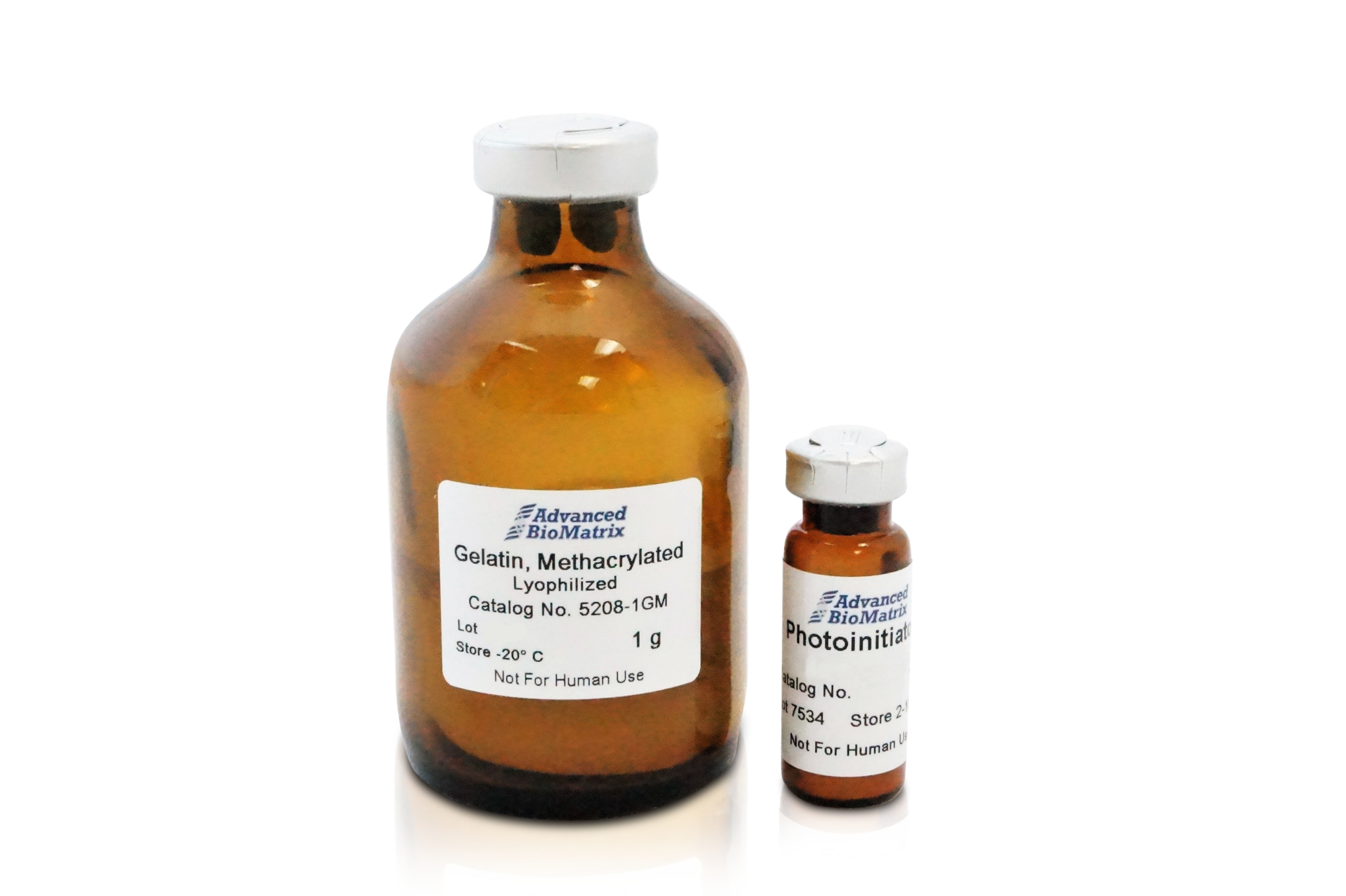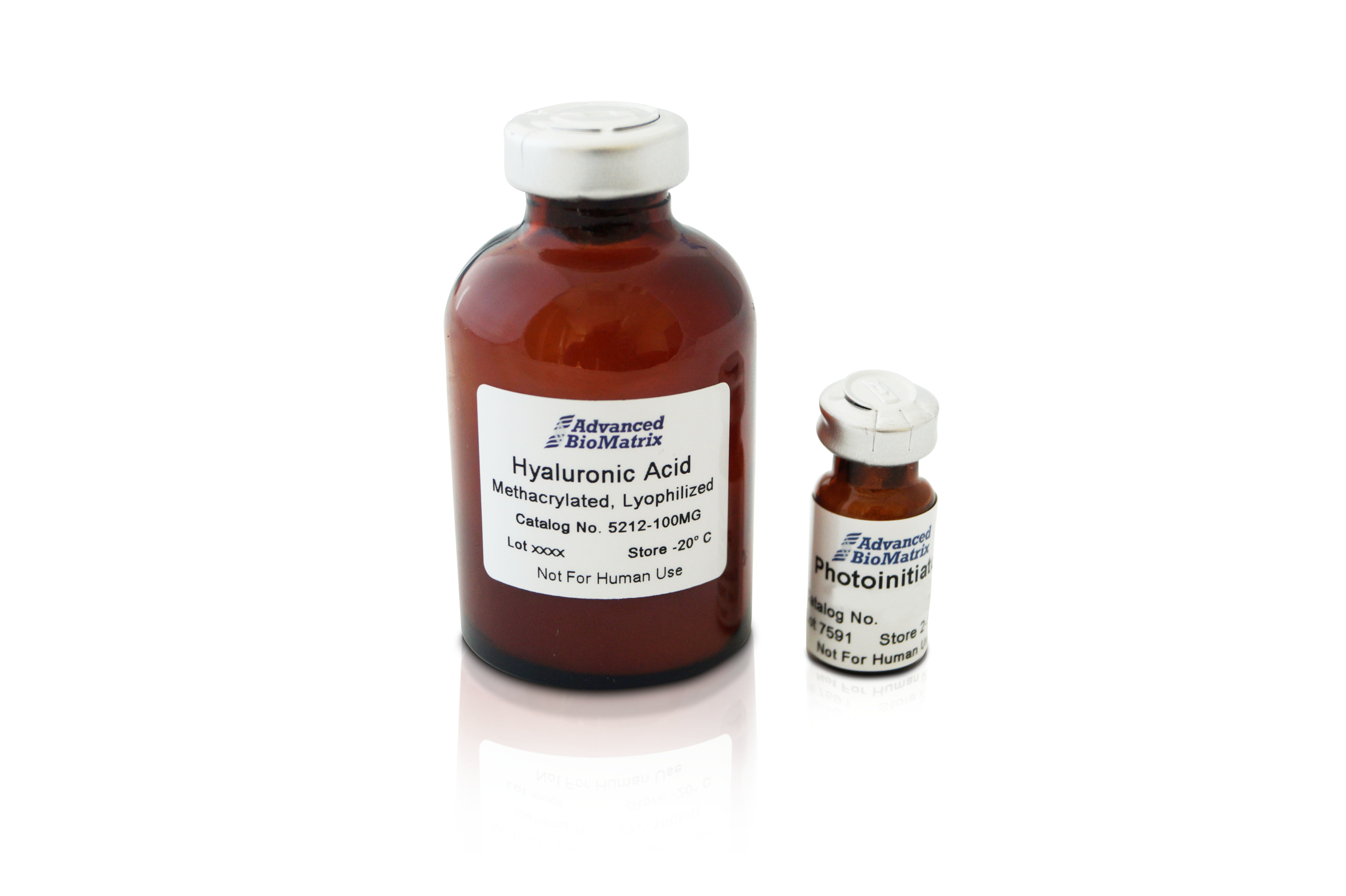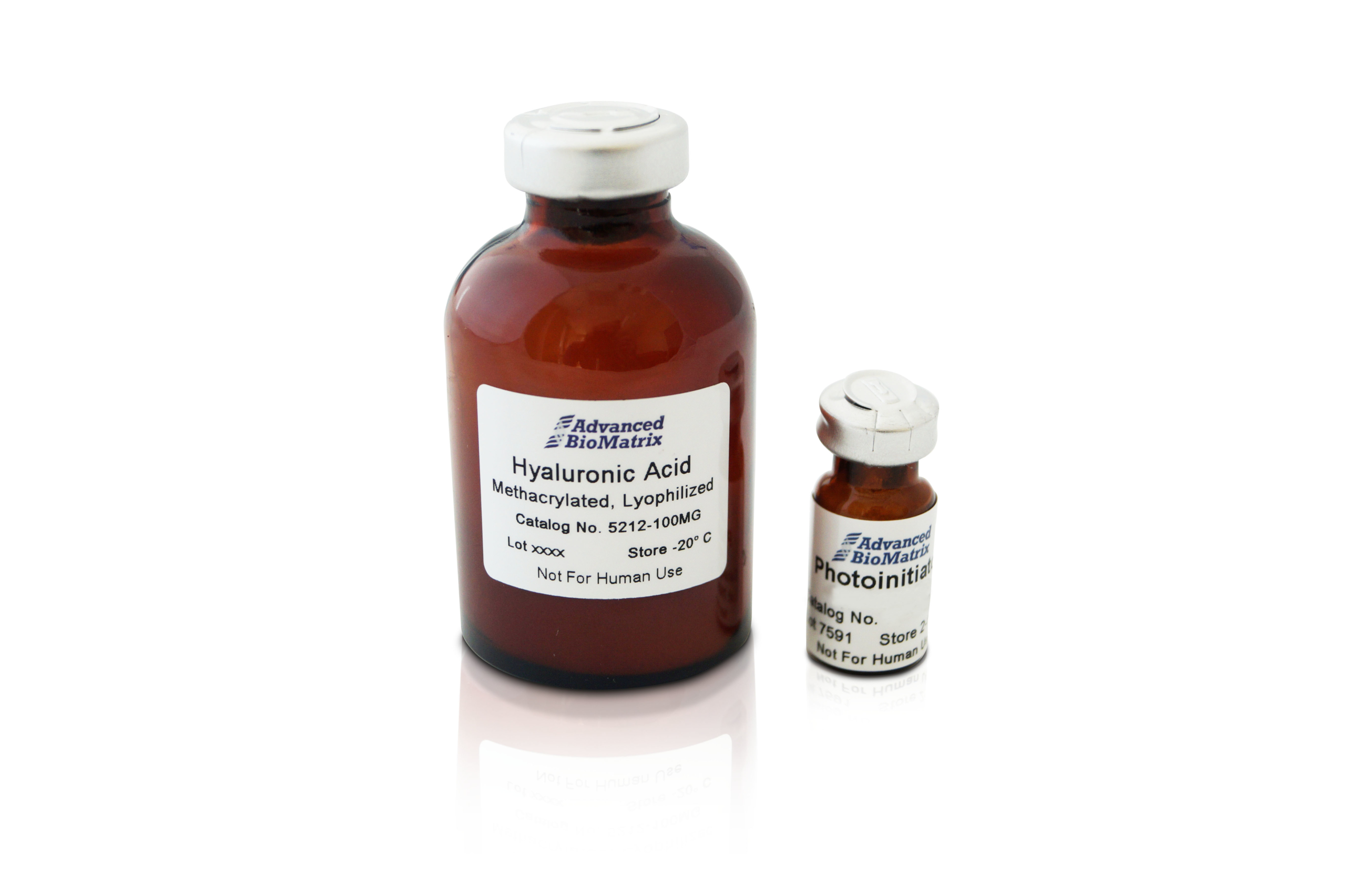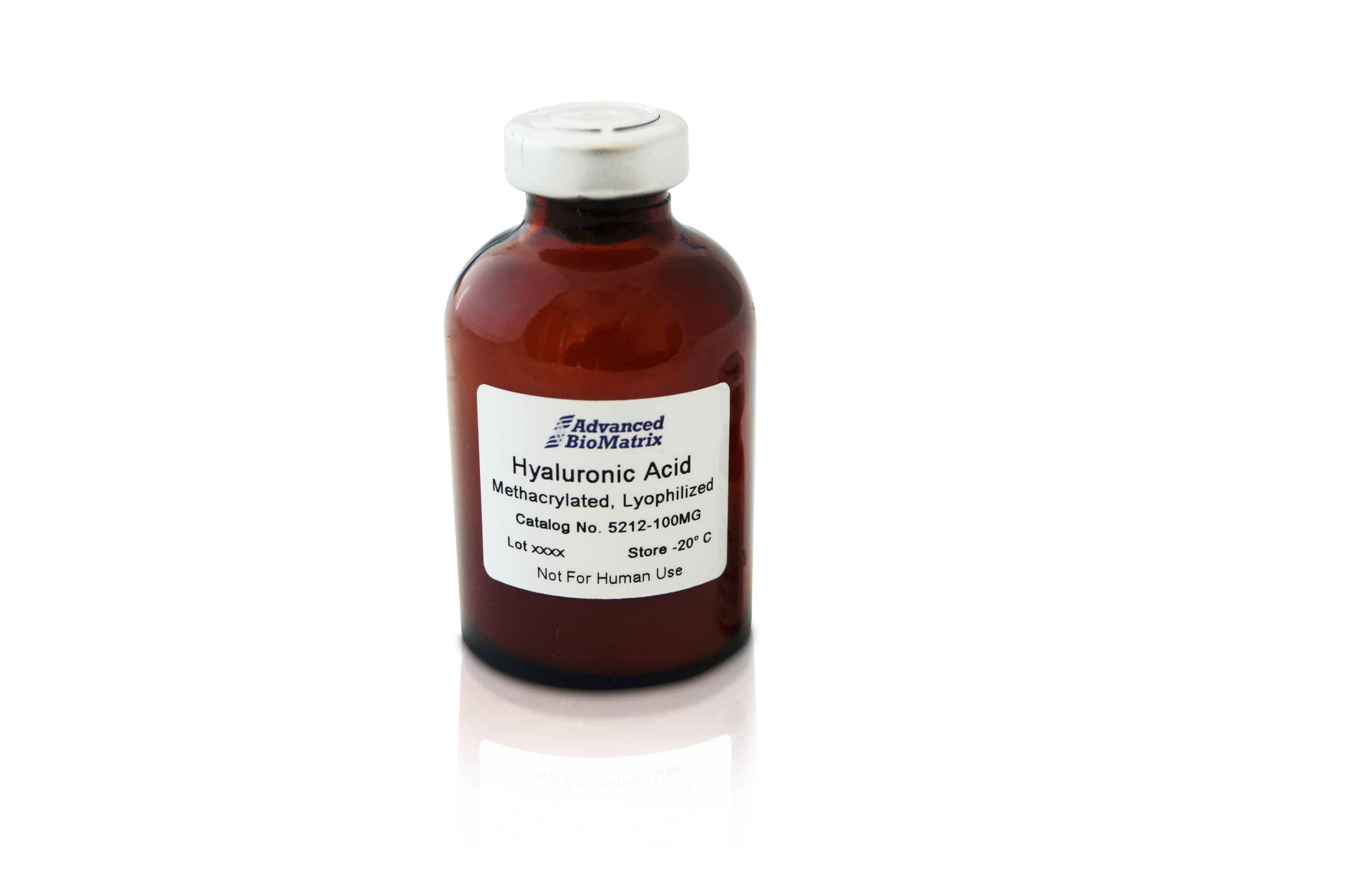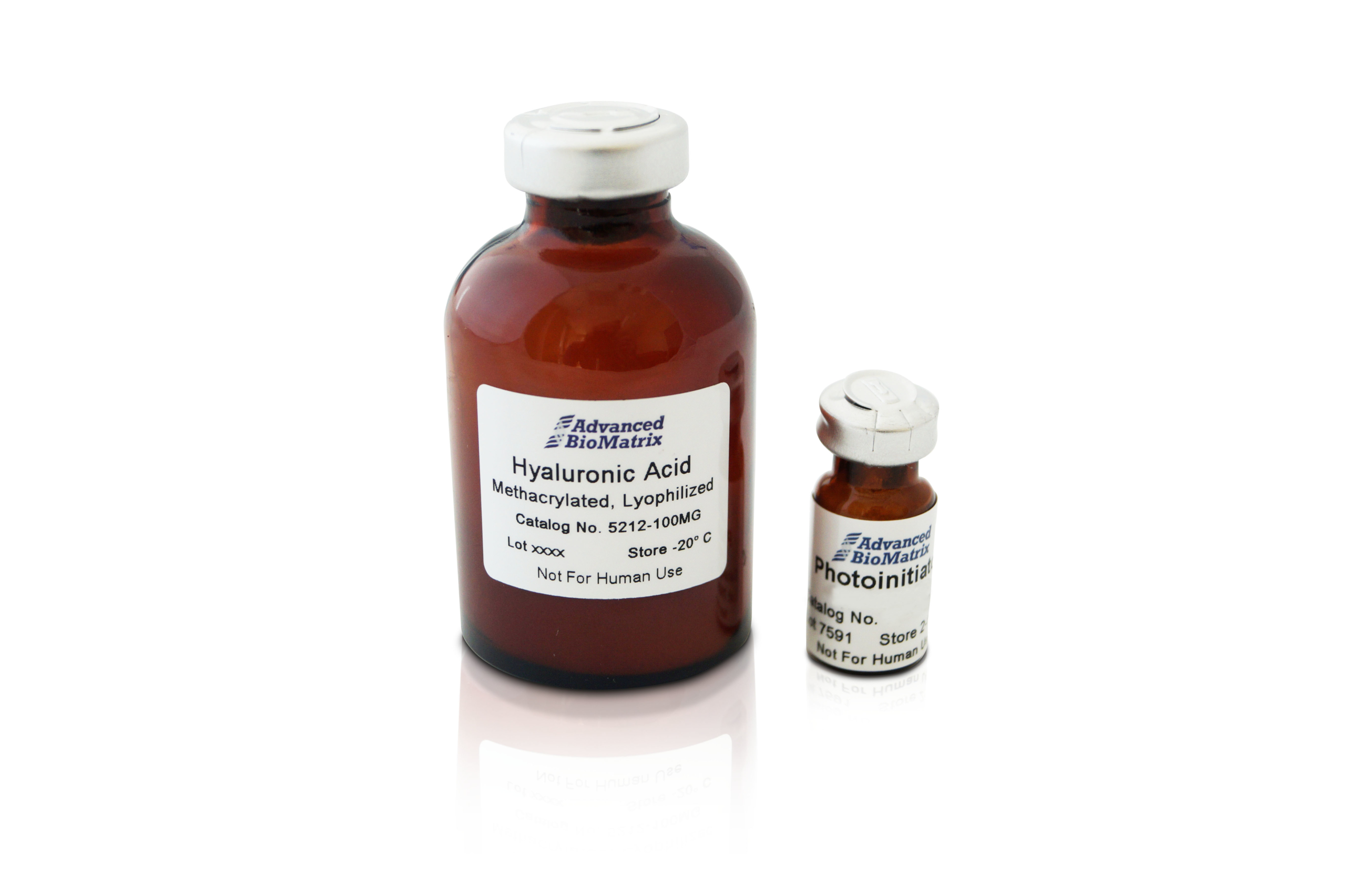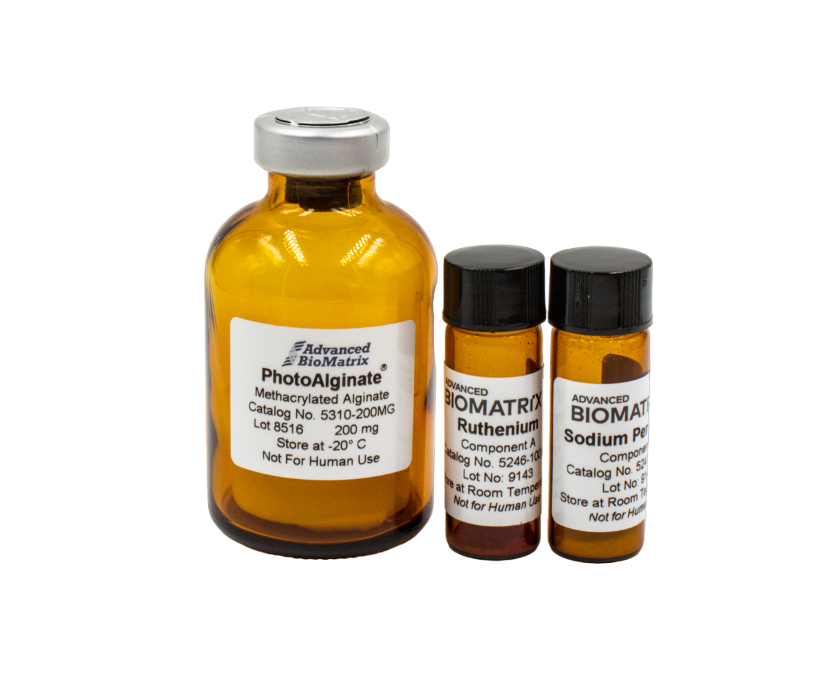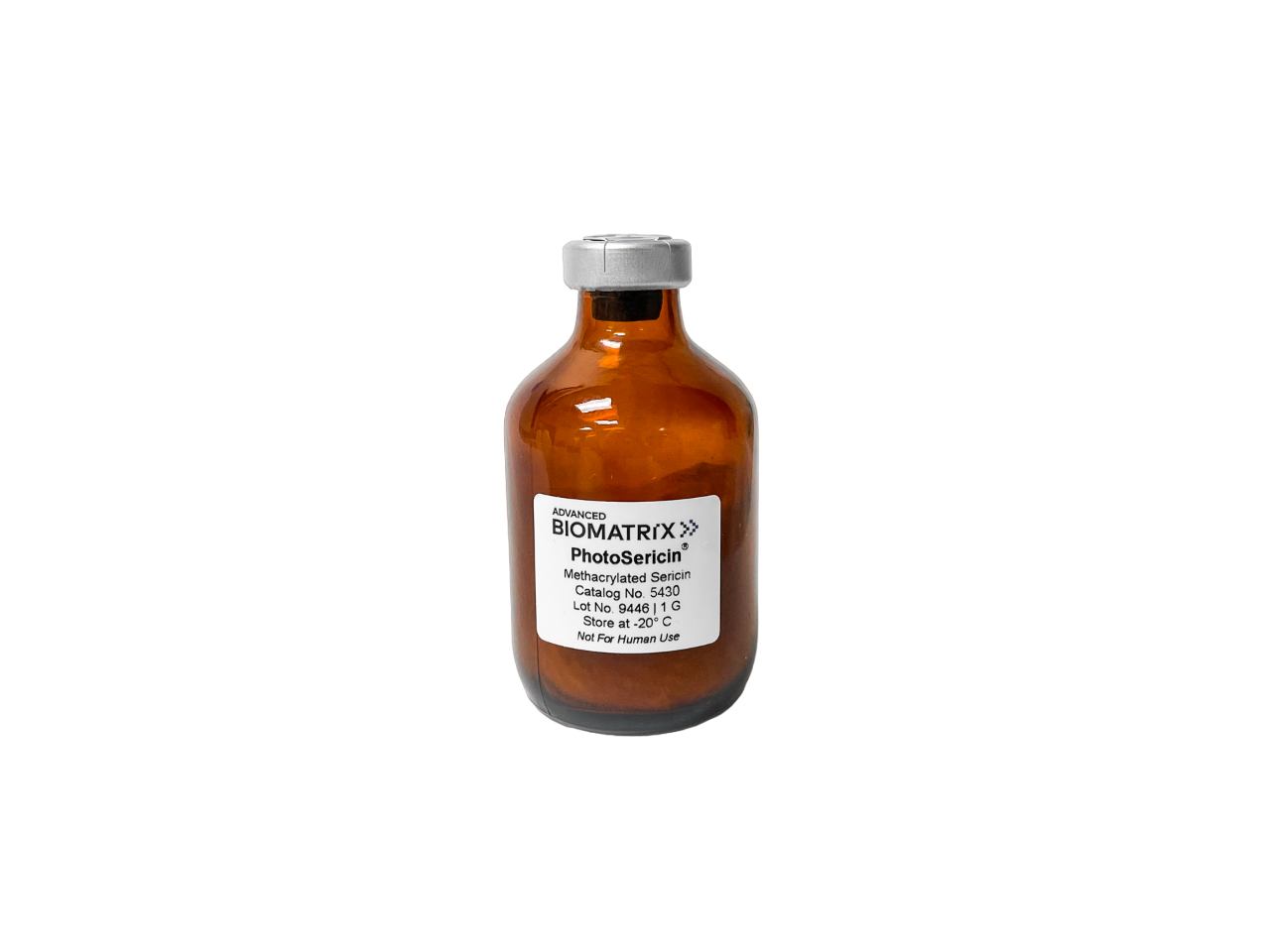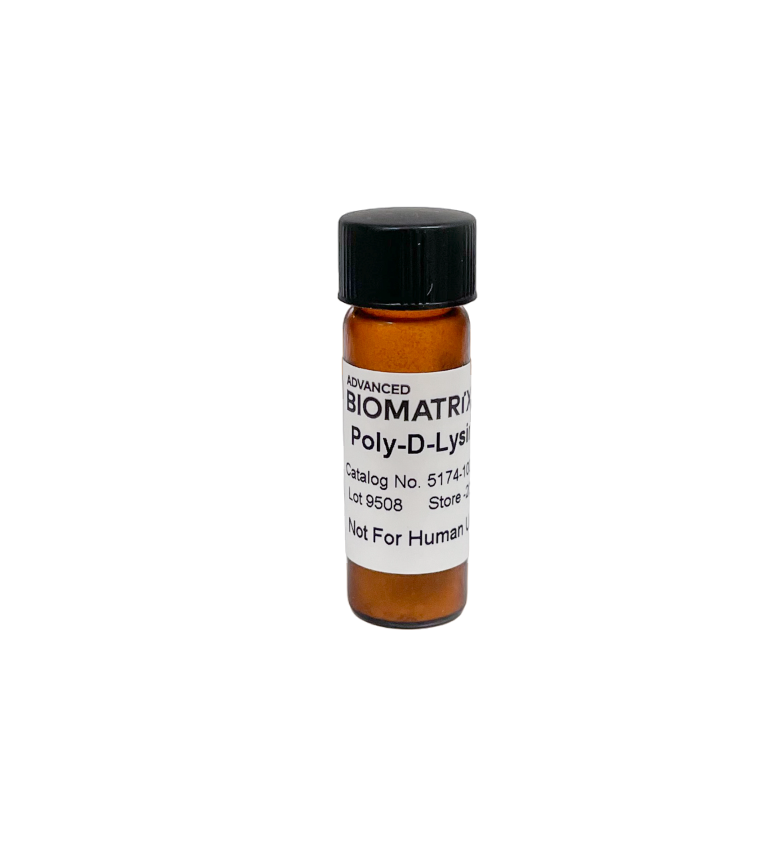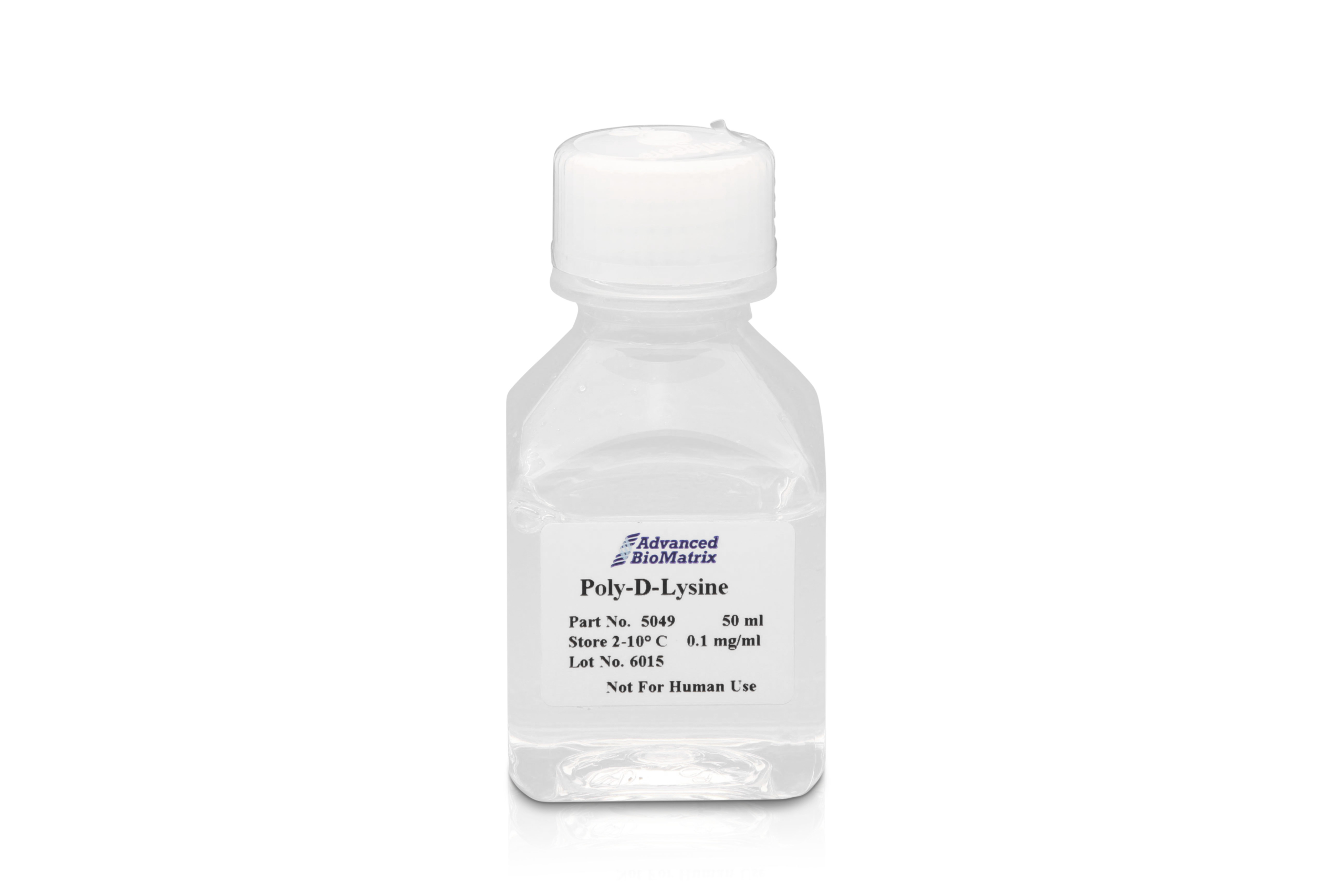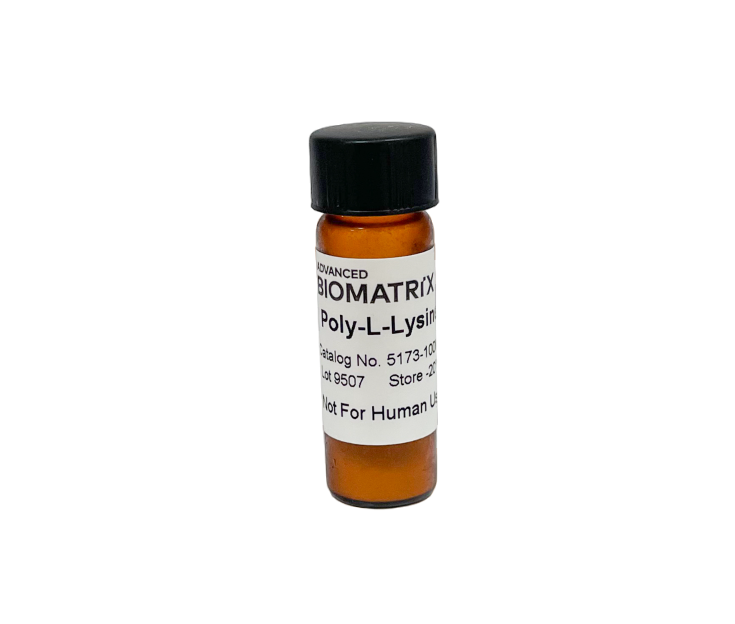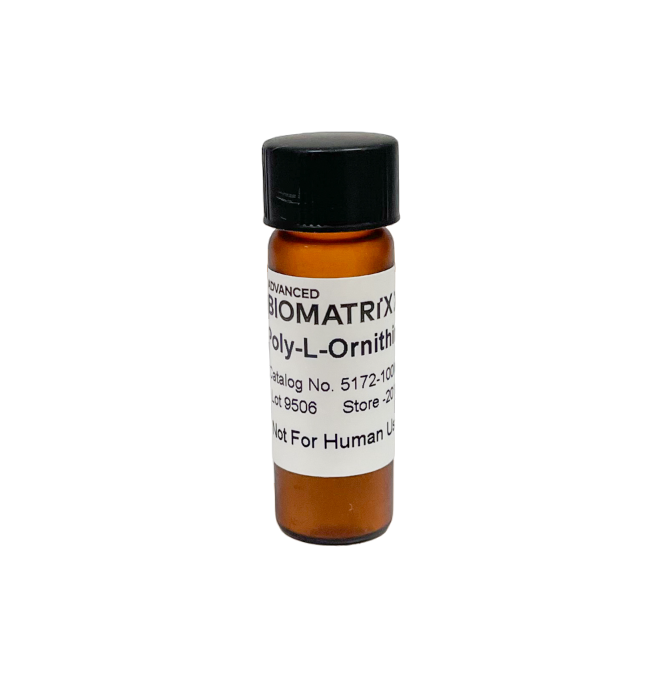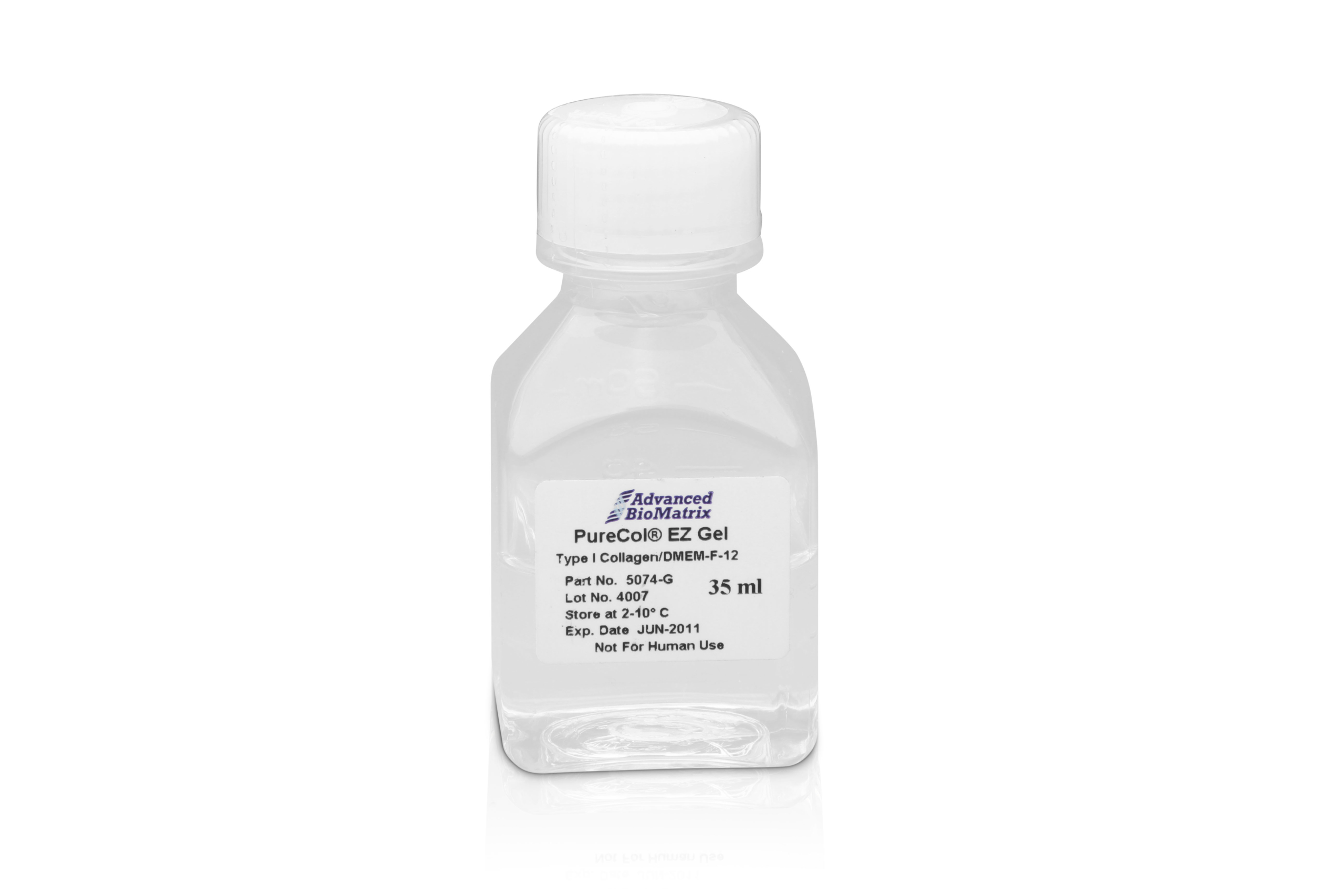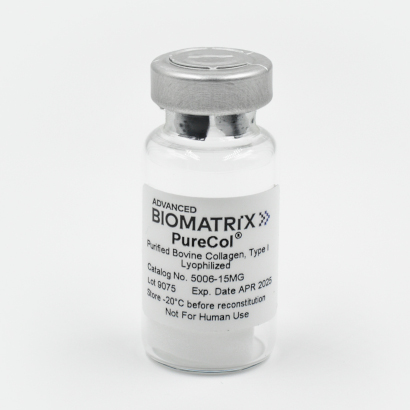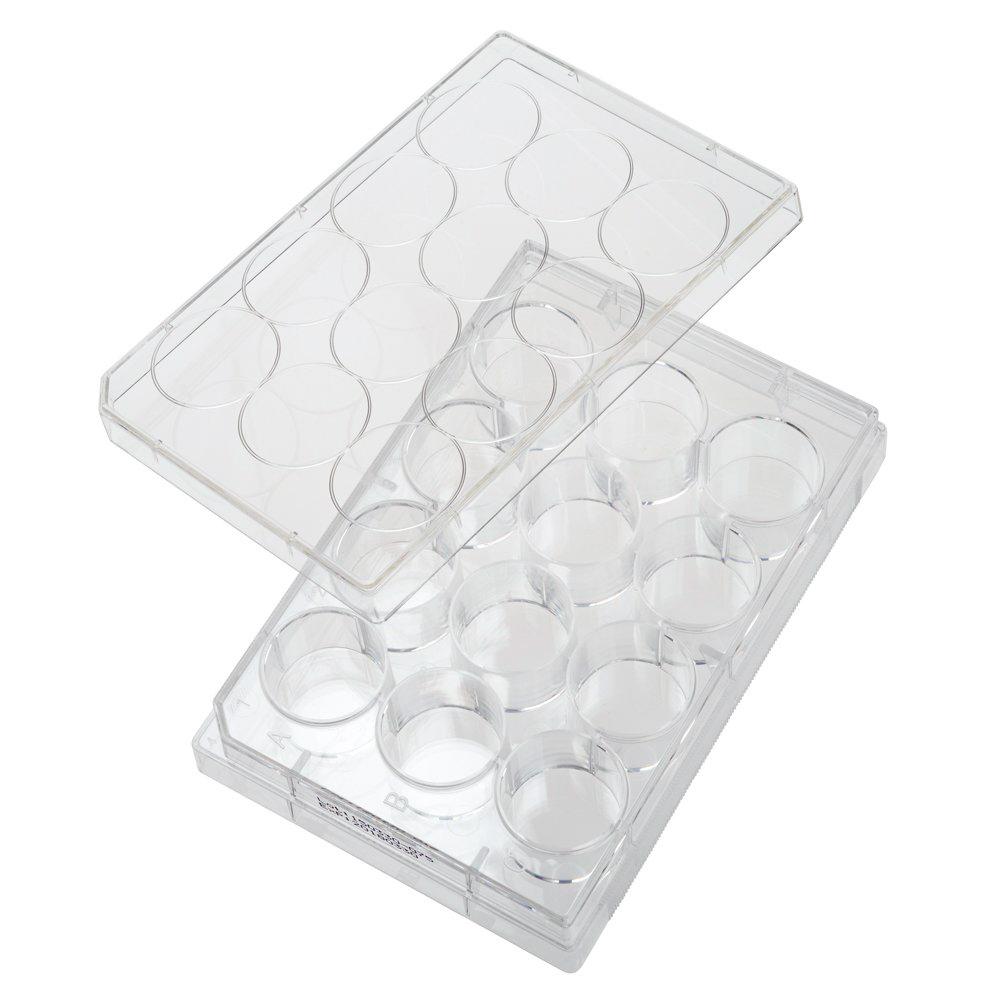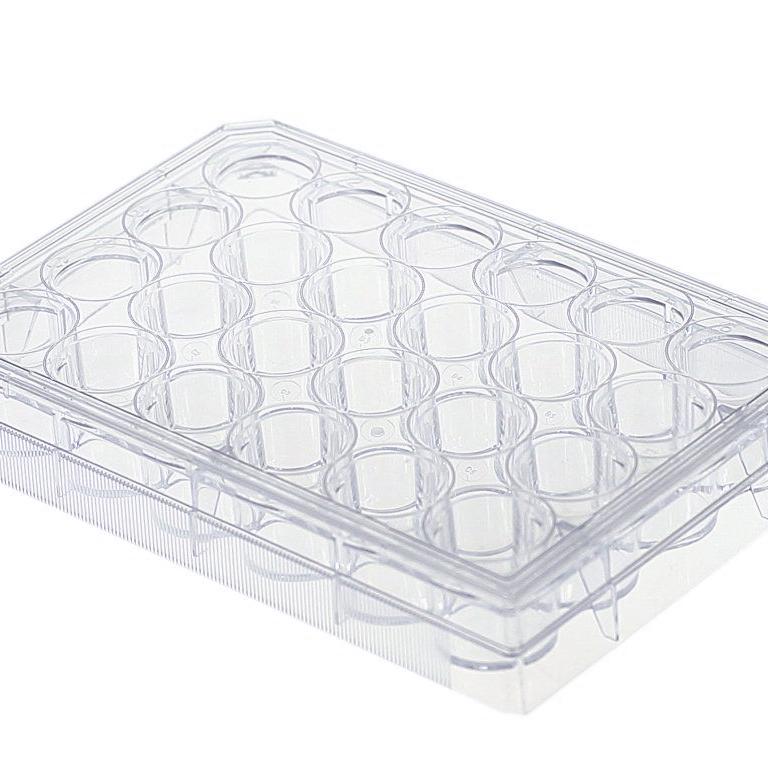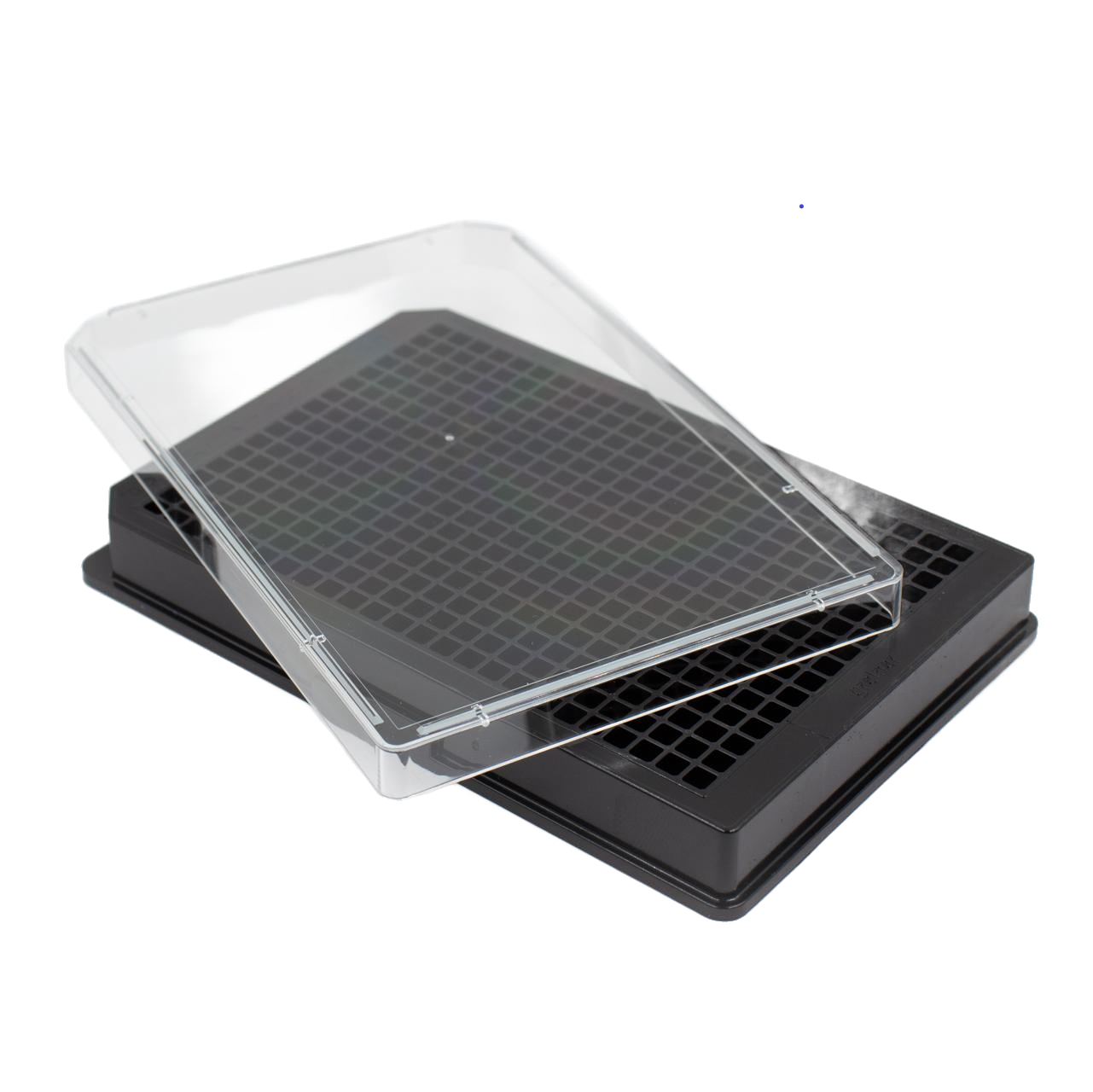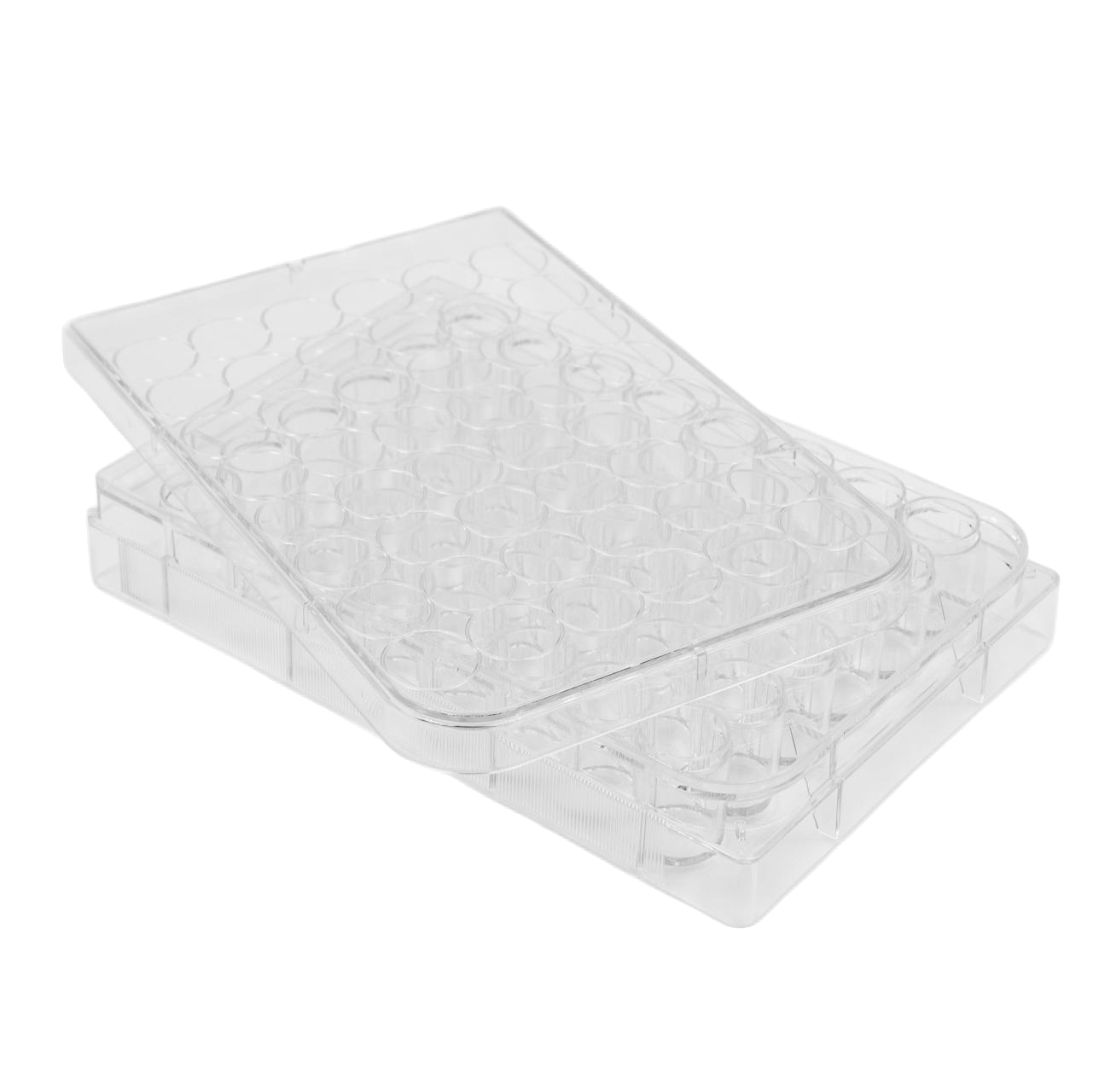Matrix Proteins / Bioprinting
Advantages of Three-Dimensional (3D) Cell Culture Systems over traditional 2D Models
The behavior of cells cultured in a three-dimensional (3D) environment more accurately mirrors cellular responses observed in vivo. 3D cell culture systems or so-called 3D models (an in-vitro experimental set-up) better represent the complex microenvironment found within the body’s tissues. Extensive research indicates notable morphological and physiological differences between cells cultured in a 3D environment compared to those in a traditional two-dimensional (2D) culture setup.
Exploring the Dimensional Dynamics: Implications of 3D Culture in Cellular Responses and Disease Modeling
The pivotal aspect of 3D culture lies in its additional dimensionality, playing a crucial role in eliciting distinct cellular responses. This dimensionality not only influences the spatial organization of cell surface receptors engaged in interactions with neighboring cells but also imposes physical constraints on the cells themselves. These spatial and physical aspects in 3D cultures significantly impact signal transduction processes, bridging external stimuli to internal cellular responses. Therefore, a 3D model (i.e. skin model, lung model, atherosclerosis model) can mimic important steps for cardiovascular research, lung research, and cancer research. (cell adhesion, invasion of cells, transmigration of cells through an endothelial layer, impact on extracellular molecules)
Key Biomolecular Players in Shaping the Structural Integrity of 3D Cultures
Moreover, biomolecules such as collagen (atelocollagen and telocollagen), elastin, laminin, adhesion peptides, and adhesion molecules play a crucial role in the structure and function of 3D cultures. These proteins contribute to the formation and maintenance of the extracellular matrix, influencing cell adhesion and promoting a more realistic replication of the natural tissue environment. The stiffness of the 3D environment also contributes to the differentiation of cellular responses.
Exploring Substrate Rigidity: CytoSoft® Plates for Fine-Tuning Cell Culture Conditions
The rigidity of the substrate (stiffness) to which cells adhere can have a profound effect on cell morphology and gene expression. CytoSoft® plates provide a tool to culture cells on substrates with various rigidities covering a broad physiological range 0.2, 0.5, 2, 8, 16, 32, 64 kPa.
In addition, to analyze the impact of different stiffness of the gel itself, methacrylated matrix proteins can be used (PhotoCol®, PhotoGel®, and PhotoHA®).
Exploring 3D Bioprinting for Biomimetic Tissue Models
During the last years a new technique was established to build gels with a 3D printer (called bioprinting). These models include the same biomolecules such as collagen (atelocollagen and telocollagen), elastin, laminin, adhesion peptides, and adhesion molecules and gives us a new look inside this fantastic world.
-
Lifeink® 260, Acidic Type I Collagen Bioink
Cat.-Nr: 5358-4ML
Lifeink® 260 is an acidic Type I collagen bioink at a concentration of 70 mg/ml for extrusion-based 3D bioprinting. The product is a highly... Read More
-
Mebiol® Thermoreversible Hydrogel
Cat.-Nr: 5180-10ML
Mebiol® Thermoreversible Hydrogel is 1 gram of a copolymer of poly(N-isopropylacrylamide) and poly(ethylene glycol) (PNIPAAm-PEG). The defining... Read More
-
Nutragen®, Bovine Collagen, Solution
Cat.-Nr: 5010-50ML
Nutragen® collagen (bovine collagen, atelocollagen) is known as the standard of all collagens for purity (>99% collagen content), functionality,... Read More
-
PEGDA 3400 MW bulk non-sterile powder
Cat.-Nr: GS700
Polyethylene Glycol Diacrylate (PEGDA) hydrogels are powerful tools for uncovering basic cellular biology because they are considered biologically... Read More
-
PEGDA 3400 MW bulk non-sterile powder
Cat.-Nr: GS705
Polyethylene Glycol Diacrylate (PEGDA) hydrogels are powerful tools for uncovering basic cellular biology because they are considered biologically... Read More
-
PEGDA, 10.000 MW
Cat.-Nr: 5340-1GM
Polyethylene Glycol Diacrylate (PEGDA) is a blank slate hydrogel that gels rapidly at room temperature in the presence of a photoinitiator and light.... Read More
-
PEGDA, 1000 MW
Cat.-Nr: 5337-1GM
Polyethylene Glycol Diacrylate (PEGDA) is a blank slate hydrogel that gels rapidly at room temperature in the presence of a photoinitiator and light.... Read More
-
PEGDA, 20.000 MW
Cat.-Nr: 5341-1GM
Polyethylene Glycol Diacrylate (PEGDA) is a blank slate hydrogel that gels rapidly at room temperature in the presence of a photoinitiator and light.... Read More
-
PEGDA, 6000 MW
Cat.-Nr: 5339-1GM
Polyethylene Glycol Diacrylate (PEGDA) is a blank slate hydrogel that gels rapidly at room temperature in the presence of a photoinitiator and light.... Read More
-
PEPTITE-2000™, RGD Peptide
Cat.-Nr: 5020-5MG
PEPTITE-2000® is a synthetic peptide containing the RGD cell attachment sequence found in fibronectin, vitronectin and many other matrix and serum... Read More
-
Phosphate Buffered Saline
Cat.-Nr: 5076-100ML
Phosphate Buffered Saline (PBS) 10X is formulated and prepared to use in conjunction with other products provided by Advanced BioMatrix such as Type... Read More
-
PhotoAlginate® Methacrylated Alginate
Cat.-Nr: 5310-200MG
PhotoAlginate® is a sterile, lyophilized, methacrylated alginate. It creates 3D hydrogels that can be prepared at multiple concentrations and... Read More
-
PhotoAlginate® with Ruthenium kit
Cat.-Nr: 5355-1KIT
PhotoAlginate® is a sterile, lyophilized, methacrylated alginate. It creates 3D hydrogels that can be prepared at multiple concentrations and... Read More
-
PhotoAlginate® with with LAP kit
Cat.-Nr: 5354-1KIT
PhotoAlginate® is a sterile, lyophilized, methacrylated alginate. It creates 3D hydrogels that can be prepared at multiple concentrations and... Read More
-
PhotoAlginate®-Irgacure, Methacrylated Alginate with Irgacure Kit
Cat.-Nr: 5353-1KIT
PhotoAlginate® is a sterile, lyophilized, methacrylated alginate. It creates 3D hydrogels that can be prepared at multiple concentrations and... Read More
-
PhotoChitosan®-Irgacure, Methacrylated Chitosan with Irgacure Kit
Cat.-Nr: 5443-1KIT
PhotoChitosan® is a purified and lyophilized methacrylated chitosan powder for photocrosslinkable hydrogels. PhotoChitosan® is a highly versatile... Read More
-
PhotoChitosan®-LAP, Methacrylated Chitosan with LAP Kit
Cat.-Nr: 5441-1KIT
PhotoChitosan® is a purified and lyophilized methacrylated chitosan powder for photocrosslinkable hydrogels. PhotoChitosan® is a highly versatile... Read More
-
PhotoChitosan®-RUT, Methacrylated Chitosan with Ruthenium Kit
Cat.-Nr: 5442-1KIT
PhotoChitosan® is a purified and lyophilized methacrylated chitosan powder for photocrosslinkable hydrogels. PhotoChitosan® is a highly versatile... Read More
-
PhotoChitosan®, Methacrylated Chitosan (Chitosan only)
Cat.-Nr: 5428-100MG
PhotoChitosan® is a purified and lyophilized methacrylated chitosan powder for photocrosslinkable hydrogels. PhotoChitosan® is a highly versatile... Read More
-
PhotoCol®-IRG, Methacrylated Type I Collagen Kit
Cat.-Nr: 5201-1KIT
PhotoCol®-IRG is a methacrylated Type I collagen kit. These 3D collagen gels can be prepared at various concentrations and photocrosslinked (365nm)... Read More
-
PhotoCol®-LAP, Methacrylated Collagen with LAP Kit
Cat.-Nr: 5270-1KIT
PhotoCol®-LAP is a methacrylated Type I collagen kit.These 3D collagen gels can be prepared at various concentrations and photocrosslinked (405nm)... Read More
-
PhotoCol®-RUT, Methacrylated Collagen with Ruthenium Kit
Cat.-Nr: 5271-1KIT
PhotoCol® Methacrylated Collagen is a photocrosslinkable type I collagen for 3D cell culture and bioprinting. As the most abundant protein in the... Read More
-
PhotoDextran®-Irgacure, Methacrylated Dextran with Irgacure Kit
Cat.-Nr: 5331-1KIT
PhotoDextran® is 1 gram of lyophilized methacrylated dextran. PhotoDextran® provides 3D hydrogels that can be prepared at multiple concentrations... Read More
-
PhotoDextran®-LAP, methacrylated Dextran with LAP Kit
Cat.-Nr: 5332-1KIT
PhotoDextran® is 1 gram of lyophilized methacrylated dextran. PhotoDextran® provides 3D hydrogels that can be prepared at multiple concentrations... Read More
-
PhotoDextran®-RUT, methacrylated Dextran with Ruthenium Kit
Cat.-Nr: 5333-1KIT
PhotoDextran® is 1 gram of lyophilized methacrylated dextran. PhotoDextran® provides 3D hydrogels that can be prepared at multiple concentrations... Read More
-
PhotoDextran®, Methacrylated Dextran (Dextran only)
Cat.-Nr: 5311-1GM
PhotoDextran® is 1 gram of lyophilized methacrylated dextran. PhotoDextran® provides 3D hydrogels that can be prepared at multiple concentrations... Read More
-
PhotoGel® UV - Methacrylated Gelatin Kit
Cat.-Nr: 5215-1KIT
NEW name: PhotoGel® 95% DS with Irgacure Kit PhotoGel®-IRG is a methacrylated gelatin kit. These 3D gelatin hydrogels can be prepared at various... Read More
-
PhotoGel®-LAP, Methacrylated Gelatin with LAP Kit
Cat.-Nr: 5272-1KIT
NEW name: PhotoGel® 95% DS with LAP Kit PhotoGel®-LAP is a methacrylated gelatin kit. These 3D gelatin hydrogels can be prepared at various... Read More
-
PhotoGel®-RUT, Methacrylated Gelatin with Ruthenium Kit
Cat.-Nr: 5273-1KIT
NEW name: PhotoGel® 95% DS with Ruthenium Kit PhotoGel®-RUT is a methacrylated gelatin kit. These 3D gelatin hydrogels can be prepared at... Read More
-
PhotoHA®-LAP, Methacrylated Hyaluronic Acid with LAP Kit
Cat.-Nr: 5274-1KIT
NEW name: PhotoHA®-Stiff with LAP Kit PhotoHA®-LAP is a methacrylated hyaluronic acid (HAMA) kit. These 3D hyaluronic acid hydrogels can be... Read More
-
PhotoHA®-RUT, Methacrylated Hyaluronic Acid with Ruthenium Kit
Cat.-Nr: 5275-1KIT
NEW name: PhotoHA®-Stiff with Ruthenium Kit PhotoHA®-RUT is a methacrylated hyaluronic acid (HAMA) kit. These 3D hyaluronic acid hydrogels can... Read More
-
PhotoHA®-Soft Methacrylated Hyaluronic Acid (GM-HA)
Cat.-Nr: 5388-100MG
PhotoHA® is 100 mg of lyophilized methacrylated hyaluronic acid (GM-HA). PhotoHA® provides 3D hyaluronic acid hydrogels with the unique... Read More
-
PhotoHA®, Methacrylated Hyaluronic Acid (HA Only)
Cat.-Nr: 5212-100MG
NEW name: PhotoHA®-Stiff Advanced BioMatrix offers PhotoHA®, a methacrylated hyaluronic acid (HAMA) for photocrosslinkable hydrogels. These... Read More
-
PhotoHA®UV -Methacrylated Hyaluronic Acid Kit
Cat.-Nr: 5220-1KIT
NEW name: PhotoHA®-Stiff with Irgacure Kit PhotoHA®-IRG is a methacrylated hyaluronic acid (HAMA) kit. These 3D hyaluronic acid hydrogels can be... Read More
-
PhotoSericin®-LAP, Methacrylated Sericin with LAP Kit
Cat.-Nr: 5431-1KIT
PhotoSericin® is a purified and lyophilized methacrylated sericin powder for photocrosslinkable hydrogels. PhotoSericin® is a highly versatile... Read More
-
PhotoSericin®-RUT, Methacrylated Sericin with Ruthenium Kit
Cat.-Nr: 5432-1KIT
PhotoSericin® is a purified and lyophilized methacrylated sericin powder for photocrosslinkable hydrogels. PhotoSericin® is a highly versatile... Read More
-
PhotoSericin®, Methacrylated Sericin (Sericin only)
Cat.-Nr: 5430-1GM
PhotoSericin® is a purified and lyophilized methacrylated sericin powder for photocrosslinkable hydrogels. PhotoSericin® is a highly versatile... Read More
-
Poly-D-Lysine Hydrobromide, Powder
Cat.-Nr: 5174-100MG
Poly-D-Lysine comes with 100 mg of non-sterile powder. Poly-D-Lysine is a synthetic amino acid chain that is positively charged and widely used as a... Read More
-
Poly-D-Lysine Hydrobromide, Solution
Cat.-Nr: 5049-50ML
Poly-D-Lysine is a synthetic amino acid chain that is positively charged and widely used as a coating to enhance cell attachment and adhesion to both... Read More
-
Poly-L-Lysine Hydrobromide, Powder
Cat.-Nr: 5173-100MG
Poly-L-Lysine comes with 100 mg of non-sterile powder. Poly-L-Lysine is a synthetic amino acid chain that is positively charged and widely used as a... Read More
-
Poly-L-Ornithine Hydrobromide, Powder
Cat.-Nr: 5172-100MG
Poly-L-Ornithine comes with 100 mg of non-sterile powder. Poly-L-Ornithine is a synthetic amino acid chain that is positively charged and widely used... Read More
-
Poly-L-Ornithine Hydrobromide, Solution
Cat.-Nr: 5058-50ML
Poly-L-Ornithine is a synthetic amino acid chain that is positively charged having one hydrobromide per unit of ornithine. Poly-L-Ornithine is widely... Read More
-
PureCol® EZ Gel, Bovine Collagen
Cat.-Nr: 5074-35ML
Important information: This product is currently not available for our customers in Europe. We offer as an alternative the Nutragen, bovine... Read More
-
PureCol®-S, Collagen Standard
Cat.-Nr: 5015-20ML
PureCol®-S collagen is provided as a standard for use in assays where ultra-pure collagen is required. PureCol®-S collagen standard is... Read More
-
PureCol®, Bovine Collagen, lyoph.
Cat.-Nr: 5006-15MG
PureCol® collagen is known as the standard of all collagens for purity (>99.9% collagen content), functionality, and the most native-like... Read More
-
PureCol®, Collagen Coated, 100 x 20mm Dishes
Cat.-Nr: 5028-10EA
PureCol® Collagen Coated, 100 X 20 mm Dishes have a uniform and consistent application of high quality Type I collagen on clear polystyrene surface.... Read More
-
PureCol®, Collagen Coated, 12-well Plates
Cat.-Nr: 5439-5EA
PureCol® Collagen Coated, 12-well Plates with a flat bottom have an uniform and consistent application of high quality Type I collagen on clear... Read More
-
PureCol®, Collagen Coated, 24-well Plates
Cat.-Nr: 5440-5EA
PureCol® Collagen Coated, 24-well Plates with a flat bottom have an uniform and consistent application of high quality Type I collagen on clear... Read More
-
PureCol®, Collagen Coated, 384-well Plates
Cat.-Nr: 5380-5EA
PureCol® Collagen Coated, 384-well Plates have black walls and a flat bottom with a uniform and consistent application of high quality Type I... Read More
-
PureCol®, Collagen Coated, 48-well Plates
Cat.-Nr: 5181-5EA
PureCol® Collagen Coated, 48-well Plates with a flat bottom have an uniform and consistent application of high quality Type I collagen on clear... Read More

